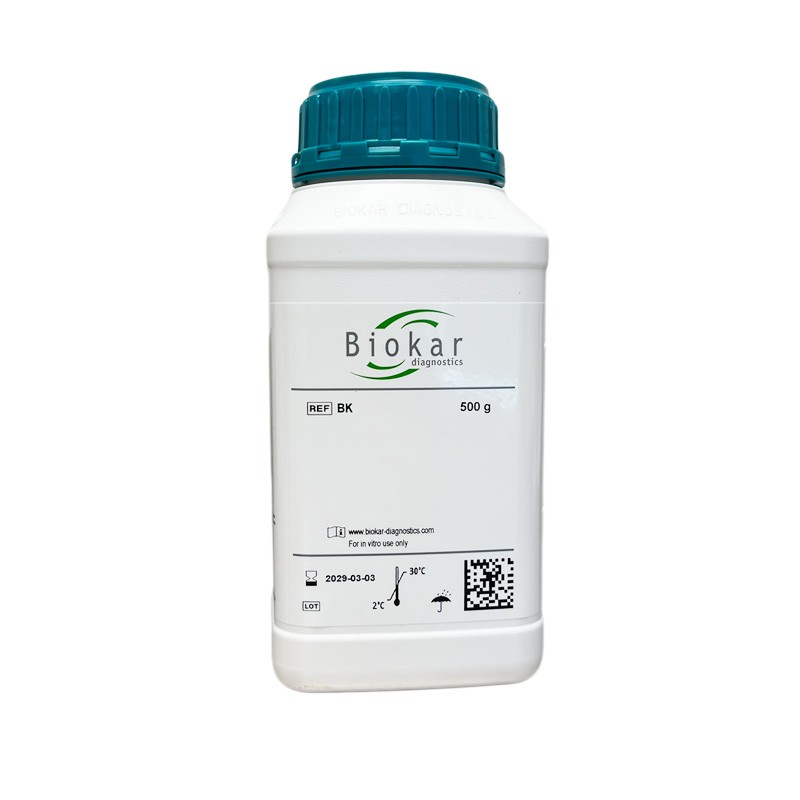- +Products
- +Allergen testing
- +Culture Media - reagents and reference material
- +Environmental testing solutions
- +Laboratory Consumables
- +Laboratory equipment
- +Microbiology equipment
- +Neogen® Food Safety Solutions
- +Temperature & Humidity Monitoring
- Services
- Support
- News
- +About Us
- Contact




Bismuth Sulfite Agar (ISO 6579-1)
Bismuth Sulfite Agar ISO 6579-1 is a selective medium used to isolate Salmonella in water, dairy products and other food products.
This medium is particularly used for the detection of Salmonella enterica subspecies enterica serovars Typhi and Paratyphi in human consumption and the feeding of animals, environmental samples and samples from the primary production stage.
Bismuth Sulfite agar can be used in the normalized methods for Salmonella detection as the second isolation media.
The typical composition corresponds to that defined in the standards NF EN ISO 6579-1.
Available: as dehydrated medium : 500 g bottle
In compliance with regulatory requirements, a USDA permit (VS 16-3) is mandatory for shipments from Canada to the USA due to the inclusion of peptone, an animal byproduct.
The concentrations of brilliant green and bismuth sulfite inhibit accompanying Gram-positive flora and most enterobacteria, except for Salmonella and several Shigella.
Using the sulfur compounds in the medium, Salmonella releases hydrogen sulfide which produces a metallic
precipitate in the presence of ferrous sulfate, giving the colonies a black or sometimes green color.
It is particularly recommended to first enrich using Tetrathionate, Selenite or Rappaport-Vassiliadis Broths and to simultaneously inoculate onto other less selective media: MacConkey, XLD or Hektoen Enteric Agars, for example.
Because of its elevated inhibitory power, this medium enables a highly contaminated inoculum to be used.




